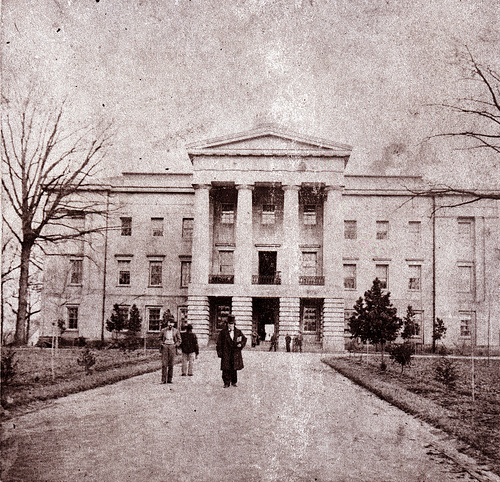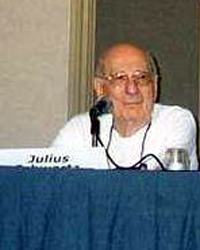|
Two Morrows Publishing
TwoMorrows Publishing is a publisher of magazines about comic books, founded in 1994 by John and Pam Morrow out of their small advertising agency in Raleigh, North Carolina, United States. Its products also include books and DVDs. List of magazines TwoMorrows publishes the following magazines: * ''Alter Ego'' * ''Back Issue!'' * ''BrickJournal''TwoMorrows Publishing website - magazines webpage Retrieved September 20, 2021. * ''Comic Book Creator'' * '''' * ''Jack Kirby Collector'' * ''RetroFan'' Defunct magazines include * '' |
Raleigh, North Carolina
Raleigh (; ) is the capital city of the state of North Carolina and the List of North Carolina county seats, seat of Wake County, North Carolina, Wake County in the United States. It is the List of municipalities in North Carolina, second-most populous city in North Carolina, after Charlotte, North Carolina, Charlotte. Raleigh is the tenth-most populous city in the Southeastern United States, Southeast, List of United States cities by population, the 41st-most populous city in the U.S., and the largest city of the Research Triangle metro area. Raleigh is known as the "City of Oaks" for its many oak, oak trees, which line the streets in the heart of the city. The city covers a land area of . The United States Census Bureau, U.S. Census Bureau counted the city's population as 474,069 in the 2020 United States census, 2020 census. It is one of the fastest-growing cities in the United States. The city of Raleigh is named after Sir Walter Raleigh, who established the lost Roanoke Co ... [...More Info...] [...Related Items...] OR: [Wikipedia] [Google] [Baidu] |
Captain Action
Captain Action was an action figure created in 1966, equipped with a wardrobe of costumes and facial masks allowing him to become Superman, Batman, Spider-Man, Captain America, Aquaman, the Phantom, The Lone Ranger (and Tonto), Flash Gordon, Buck Rogers, Sgt. Fury, Steve Canyon, and the Green Hornet. Captain Action was the Ideal Toy Company's answer to Hasbro's G.I. Joe, although the protagonist dolls of both toy lines were created and designed by the same toy-and-idea man, Stan Weston. Captain Action also had a working 4 foot (1.2192 meter) parachute. Historical overview Toy developer Stan Weston went to Hasbro's Don Levine with the idea of an articulated doll in the form of a soldier — a basic figure, and with limitless accessories. Levine and his Hasbro team took the concept, making it into G.I. Joe, the first modern action figure for boys — and the first to carry the ''action figure'' generic name, an attempt to remove the term "doll" from a toy for boys. Weston took h ... [...More Info...] [...Related Items...] OR: [Wikipedia] [Google] [Baidu] |
Silver Age Of Comic Books
The Silver Age of Comic Books was a period of artistic advancement and widespread commercial success in mainstream American comic books, predominantly those featuring the superhero archetype. Following the Golden Age of Comic Books and an interregnum in the early to mid-1950s, the Silver Age is considered to cover the period from 1956 to 1970, and was succeeded by the Bronze Age. The popularity and circulation of comic books about superheroes had declined following World War II, and comic books about horror, crime and romance took larger shares of the market. However, controversy arose over alleged links between comic books and juvenile delinquency, focusing in particular on crime, horror, and superheroes. In 1954, publishers implemented the Comics Code Authority to regulate comic content. In the wake of these changes, publishers began introducing superhero stories again, a change that began with the introduction of a new version of DC Comics' The Flash in ''Showcase'' #4 (O ... [...More Info...] [...Related Items...] OR: [Wikipedia] [Google] [Baidu] |
Golden Age
The term Golden Age comes from Greek mythology, particularly the ''Works and Days'' of Hesiod, and is part of the description of temporal decline of the state of peoples through five Ages of Man, Ages, Gold being the first and the one during which the Golden Race of humanity ( ''chrýseon génos'') lived. After the end of the first age was the Silver age, Silver, then the Bronze Age (mythology), Bronze, after this the Greek Heroic Age, Heroic age, with the fifth and current age being Iron Age (mythology), Iron. By extension, "Golden Age" denotes a period of primordial peace, harmony, ecological stability, stability, and prosperity. During this age, peace and harmony prevailed in that people did not have to work to feed themselves for the earth provided food in abundance. They lived to a very old age with a youthful appearance, eventually dying peacefully, with spirits living on as "guardians". Plato in ''Cratylus (dialogue), Cratylus'' (397 e) recounts the golden race of human ... [...More Info...] [...Related Items...] OR: [Wikipedia] [Google] [Baidu] |
Battle Of The Planets
''Battle of the Planets'' is an American adaptation of the Japanese anime series ''Science Ninja Team Gatchaman'' (1972). Of the 105 original ''Gatchaman'' episodes, 85 were used in the ''Battle of the Planets'' adaptation, produced by Sandy Frank Entertainment. The adaptation was generally faithful to the plot and character development of the original ''Gatchaman'' series, but significant additions and reductions were made in order to increase appeal to the North American television market of the late 1970s, as well as avoid controversy from parents; these included the removal of elements of graphic violence and profanity. It was the most successful anime series in the United States during the 1970s, airing on 100 network affiliates during after-school hours by 1979. As of June 2013, Sentai Filmworks have licensed the ''Gatchaman'' franchise. An oft-delayed CGI film based on the franchise, ''Gatchaman'', last slated for a 2011 release from Warner Bros., was officially canceled ... [...More Info...] [...Related Items...] OR: [Wikipedia] [Google] [Baidu] |
History Of The British Comic
A British comic is a periodical published in the United Kingdom that contains comic strips. It is generally referred to as a comic or a comic magazine, and historically as a comic paper. British comics are usually comics anthologies which are typically aimed at children, and are published weekly, although some are also published on a fortnightly or monthly schedule. The two most popular British comics, ''The Beano'' and ''The Dandy'', were released by DC Thomson in the 1930s. By 1950 the weekly circulation of both reached two million.Armstrong, Stephen"Was Pixar's Inside Out inspired by The Beano?"''The Telegraph''. 27 July 2015 Explaining the enormous popularity of comics in British popular culture during this period, Anita O’Brien, director curator at London's Cartoon Museum, states: "When comics like ''The Beano'' and ''Dandy'' were invented back in the 1930s – and through really to the 1950s and 60s – these comics were almost the only entertainment available to chil ... [...More Info...] [...Related Items...] OR: [Wikipedia] [Google] [Baidu] |
Fawcett Comics
Fawcett Comics, a division of Fawcett Publications, was one of several successful comic book publishers during the Golden Age of Comic Books in the 1940s. Its most popular character was Captain Marvel, the alter ego of radio reporter Billy Batson, who transformed into the hero whenever he said the magic word "Shazam!". Other characters published by Fawcett include Captain Video, Hopalong Cassidy, Ibis the Invincible, Bulletman and Bulletgirl, Spy Smasher, Captain Midnight, Phantom Eagle, Mister Scarlet and Pinky, Minute-Man, Commando Yank and Golden Arrow. Aside from the better known superhero books, Fawcett also published a short-lived line of horror comics during the early 1950s, a string of titles which included '' This Magazine Is Haunted'', ''Beware! Terror Tales'', ''Worlds of Fear'', ''Strange Suspense Stories,'' and ''Unknown World''. Other genres included teenage humor ''(Otis and Babs),'' cartoon animal ''(Hoppy the Marvel Bunny),'' romance ''(Sweethearts),'' war ' ... [...More Info...] [...Related Items...] OR: [Wikipedia] [Google] [Baidu] |
Warren Publishing
Warren Publishing was an American magazine company founded by James Warren (publisher), James Warren, who published his first magazines in 1957 and continued in the business for decades. Magazines published by Warren include ''After Hours (magazine), After Hours'', ''Creepy (magazine), Creepy'', ''Eerie'', ''Famous Monsters of Filmland'', ''Help! (magazine), Help!'', and ''Vampirella''. Initially based in Philadelphia, Pennsylvania, the company moved by 1965 to New York City. Publishing history Founding Begun by James Warren, Warren Publishing's initial publications were the horror fiction, horror-fantasy--science fiction movie magazine ''Famous Monsters of Filmland'' and ''Monster World'', both edited by Forrest J Ackerman. Warren soon published ''Spacemen (magazine), Spacemen'' magazine and in 1960 ''Help! (magazine), Help!'' magazine, with the first employee of the magazine being Gloria Steinem. [...More Info...] [...Related Items...] OR: [Wikipedia] [Google] [Baidu] |
Nick Cardy
Nicholas Viscardi (October 20, 1920 – November 3, 2013), known professionally as Nick Cardy and Nick Cardi, was an American comics artist best known for his DC Comics work on Aquaman, the Teen Titans and other major characters. Cardy was inducted into the Will Eisner Comic Book Hall of Fame in 2005. Early life Nick Cardy was born Nicholas Viscardi on October 20, 1920, in New York City. He began drawing when he was very young, telling one interviewer that some paintings he had done for his school were "published in the '' ew YorkHerald-Tribune'' or one of those early papers. The teachers wanted one on sports. It was a 4 × 8 panel. ... So that was published and quite a bit of the stuff was published. ... " He also provided artwork for the Boys Club of America,Cardy in and attended the Art Students League of New York, studying life drawing.Cardy in Career Early career As did many early comics professionals, Cardy entered the comics field working for Eisner & Iger ... [...More Info...] [...Related Items...] OR: [Wikipedia] [Google] [Baidu] |
Murphy Anderson
Murphy C. Anderson Jr. (July 9, 1926 – October 22, 2015) was an American comics artist, known as one of the premier inkers of his era, who worked for companies such as DC Comics for over fifty years, starting in the Golden Age of Comic Books in the 1940s. He worked on such characters as Hawkman, Batgirl, Zatanna, the Spectre, and Superman, as well as on the ''Buck Rogers'' daily syndicated newspaper comic strip. Anderson also contributed for many years to '' PS'', the preventive maintenance comics magazine of the U.S. Army. Early life and career Murphy Anderson was born on July 9, 1926, in Asheville, North Carolina, and while in grade school moved with his family to Greensboro, North Carolina. After graduating high school in 1943, he briefly attended the University of North Carolina before moving to New York City seeking work in the comics industry, and was hired by Jack Byrne as a staff artist at the comic-book publisher Fiction House. His first confirmed credit is the two-and- ... [...More Info...] [...Related Items...] OR: [Wikipedia] [Google] [Baidu] |
Sam Glanzman
Samuel Joseph Glanzman (December 5, 1924 – July 12, 2017) was an American comics artist and memoirist. Glanzman is best known for his Charlton Comics series ''Hercules'', about the mythological Greek demigod; his autobiographical war stories about his service aboard the U.S.S. ''Stevens'' for DC Comics and Marvel Comics; and the Charlton Comics ''Fightin' Army'' feature " The Lonely War of Willy Schultz", a Vietnam War-era serial about a German-American U.S. Army captain during World War II. Biography Early life and career Glanzman was born on December 5, 1924, in Baltimore, Maryland, the son of Florence and Gustave Glanzman. His father was Jewish and his mother Catholic. His brothers were comic-book artists D.C. (Davis Charles) Glanzman, and Louis "Lew" Glanzman, the latter of whom went on to become a fine art painter. Glanzman ended his formal education after grade school.Glanzman, ''Comic Book Artist'', p. 93 He entered the comics industry in late 1939, during the period h ... [...More Info...] [...Related Items...] OR: [Wikipedia] [Google] [Baidu] |


.jpg)
.jpg)
.png)
